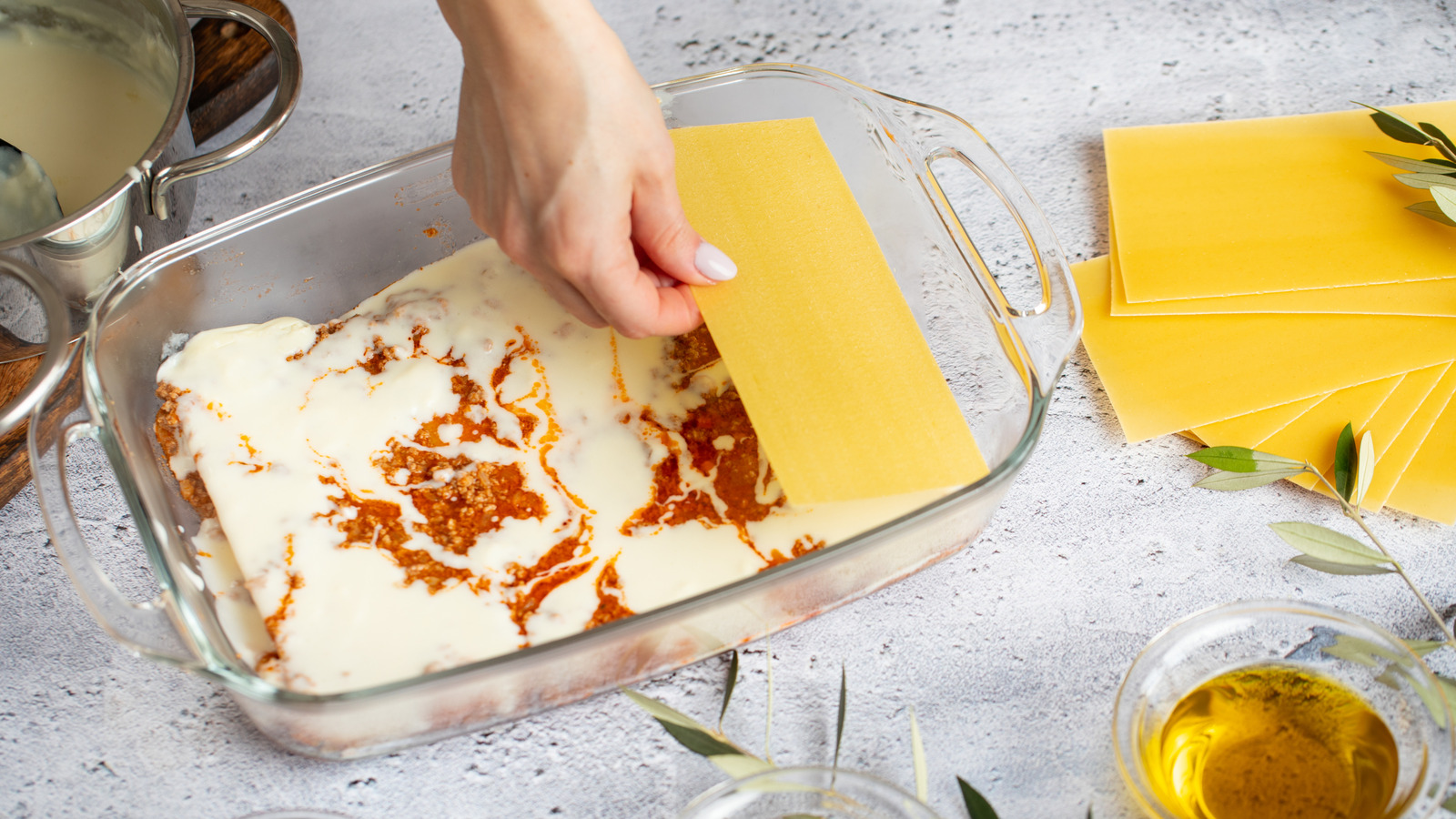
"Parisi tells us that the number of layers of sauce, noodles, and filling should be between three and five. While the exact method of layering lasagna varies according to personal preference, Parisi starts with a layer of sauce on the bottom of the pan. "Then, I do a layer of lasagna pasta," he adds. "This can be dried and parboiled, or fresh.""
"Next, Parisi said that he adds "another thin layer of the red sauce, followed by a layer of béchamel, which indeed would be the classic ingredient to use instead of ricotta, like we do here in the States." Afterwards, an even sprinkle of mozzarella and Parmigiano Reggiano completes this layer."
""From there, I repeat the process 3 to 4 more times, resulting in a 4- or 5-layered lasagna," the chef continues. When the final layer is placed, Parisi spoons the remaining sauce on the top and adds the remaining grated cheese. "I try to save a little extra of the sauces just to get a decent amount on the top," he explains, "maybe the equivalent of 2 layers of the sauce together.""
An authentic Italian lasagna typically has between three and five layers of sauce, noodles, and filling. Begin with a layer of sauce on the bottom of the pan, then place lasagna pasta sheets, either dried and parboiled or fresh. Add a thin layer of red sauce, then a layer of béchamel instead of ricotta, followed by mozzarella and Parmigiano Reggiano. Repeat layers to build four or five tiers. Spoon extra sauce on the top and sprinkle grated cheese, saving sauce to ensure a generous top layer. Alternating noodle direction with each layer is traditional in Italy.
Read at Tasting Table
Unable to calculate read time
Collection
[
|
...
]